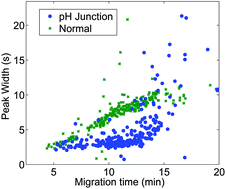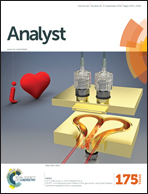Dynamic pH junction preconcentration in capillary electrophoresis- electrospray ionization-mass spectrometry for proteomics analysis
Abstract
Capillary zone electrophoresis (CZE)-electrospray ionization (ESI)-mass spectrometry (MS) is an interesting complimentary technique to reversed phase liquid chromatography (RPLC)-ESI-MS for proteomics research. However, the low sample loading capacity of CZE (typically a few nL) can limit its application for large-scale proteomics. A number of on-line sample preconcentration methods have been developed to increase sample loading volumes. This review considers the dynamic pH junction as a simple on-line sample preconcentration method; this method is well suited for amphiprotic analytes. In the pH junction, these analytes are suspended in a basic buffer, injected by pressure into the capillary, and separated in an acidic background electrolyte, with no changes in either CZE-MS operations or instrumentation. We have demonstrated that the dynamic pH junction method can improve the sample loading volume to sub-μL volumes without significant loss of separation capacity for bottom-up proteomic analysis. The dynamic pH junction based CZE-ESI-MS system has been applied for a number of complex biological samples, including the E. coli proteome, impurities in recombinant antibody therapeutics, and the characterization of the phosphoproteome from a human cell line.


 Please wait while we load your content...
Please wait while we load your content...